Research across leading home-design outlets reveals a rich spectrum of stone fire pit concepts, from organic river rock circles to sleek, modern fire tables. Materials span natural stone, flagstone, pavers, and retaining-block composites—each offering distinct textures and visual warmth. Layouts include above-ground rings, sunken pits, built-in grill variations, and multi-functional table designs, accommodating both casual gatherings and formal outdoor living rooms. Whether pursued as a weekend DIY or contracted to professionals, these fire pits can suit diverse budgets and backyard sizes, ensuring a cozy focal point for year-round entertaining.
Stone fire pits marry durability with aesthetic appeal, creating a hearth that anchors any outdoor space. From meandering garden retreats to sleek urban patios, these installations harness the natural beauty of stone—its warmth in color, texture, and form—to foster inviting gathering spots. Beyond simple functionality, thoughtful stone selections and configurations reflect personal style: rough-hewn boulders evoke rustic mountain escapes, while polished flagstones complement contemporary landscapes. With fire safety and local climate considerations in mind, property owners can choose from an array of designs—sunken, raised, portable, or built-in—and materials to craft a fire pit that feels integral to the surrounding environment. As we explore twenty standout ideas, each section presents a unique approach to leveraging stone’s versatility and timeless character.
1. Rustic River Rock Fire Pit
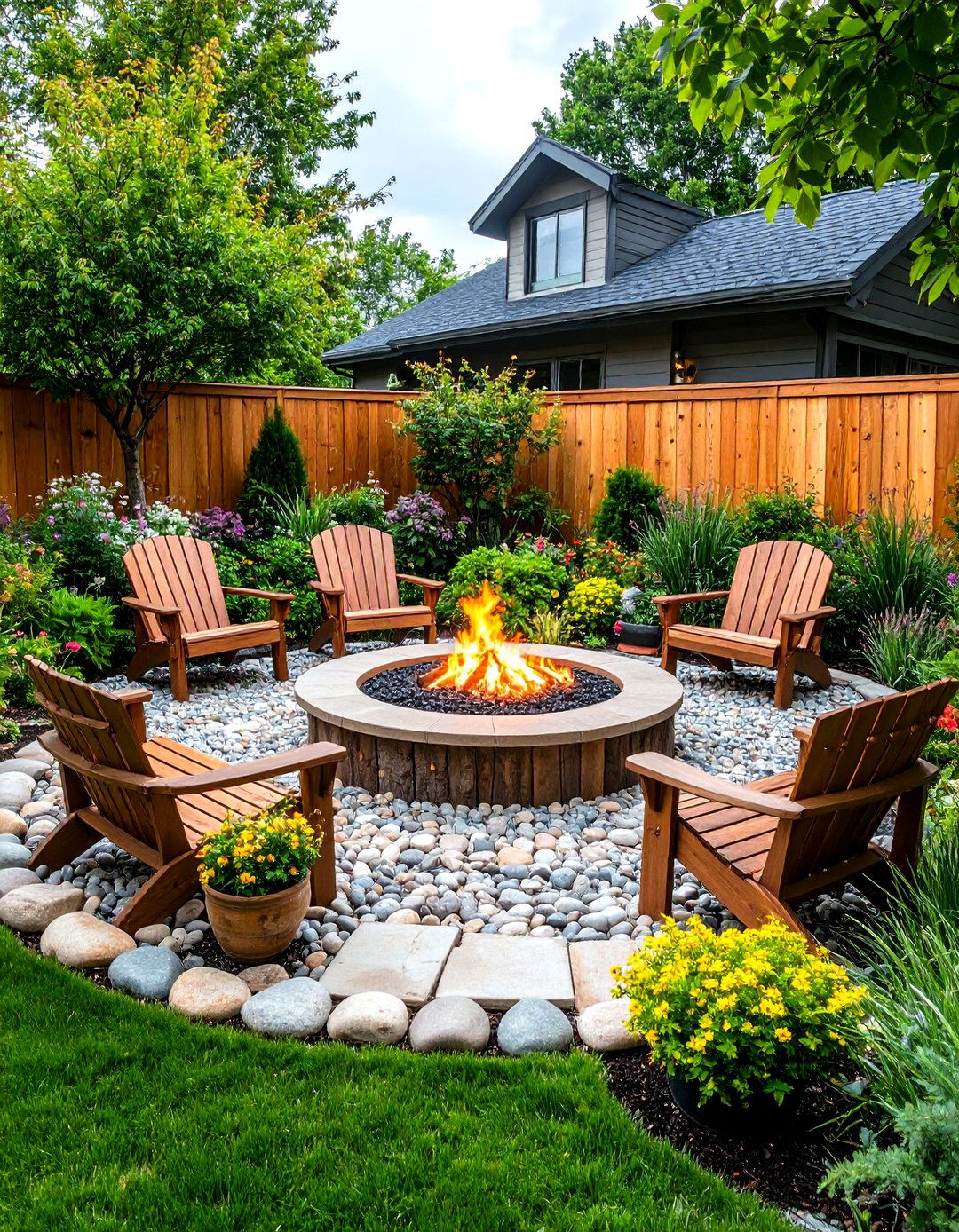
A circle of river rocks offers an organic, woodland-inspired fire pit that blends seamlessly with garden landscapes. The smooth, rounded stones—often sourced from local streams—provide a tactile contrast to surrounding foliage, and their variable hues create visual interest. Assembly typically involves excavating a shallow ring, laying a compacted gravel base, and stacking the rocks without mortar for easy off-season disassembly. This method is celebrated in DIY guides for its simplicity and the way it complements natural settings, making it a perfect weekend project for homeowners seeking a rustic gathering spot. Integrated low-profile seating like log benches or reclaimed wood stools further enhances the inviting ambiance.
2. Classic Flagstone Circle Fire Pit
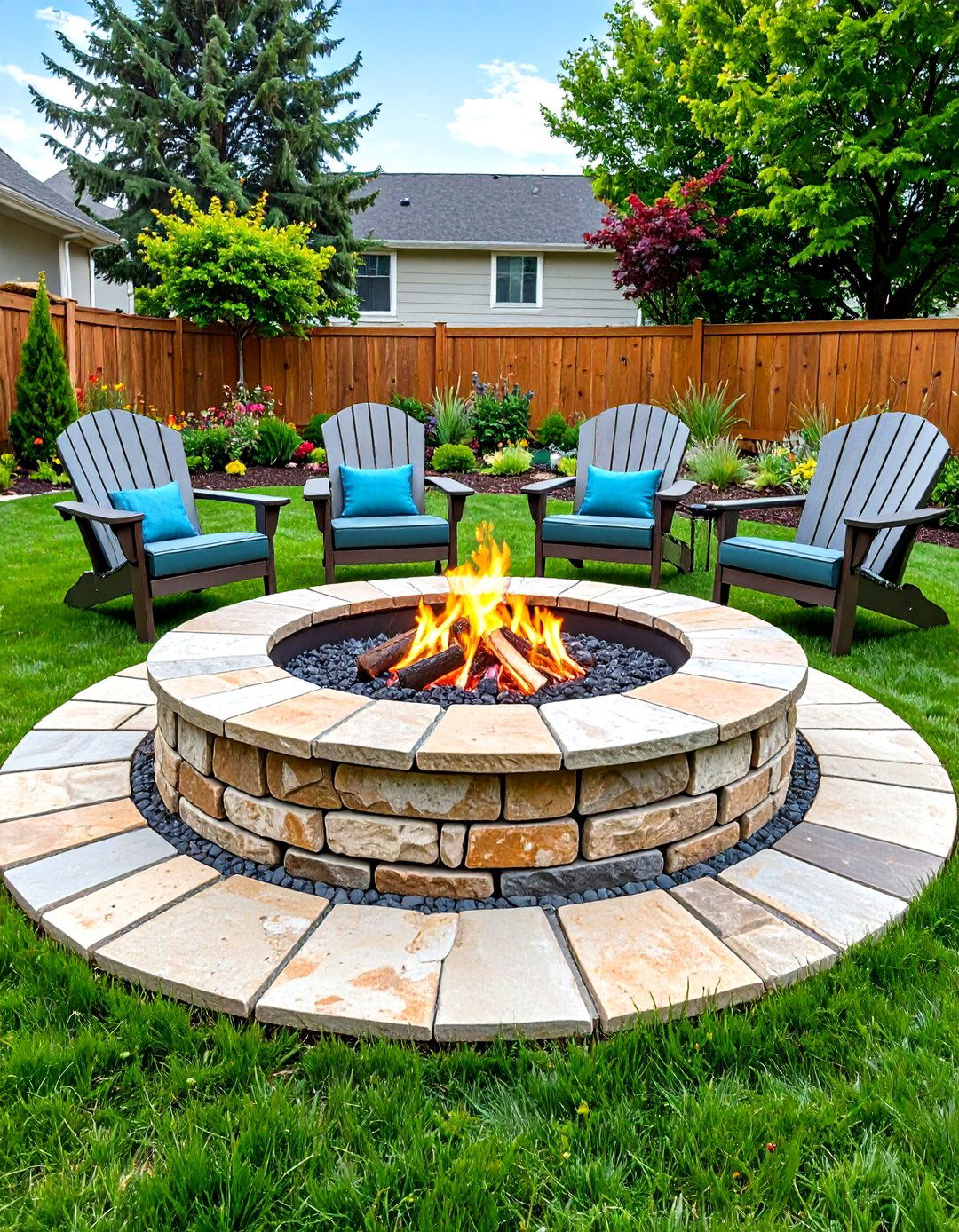
Flagstone’s flat, irregular shapes lend themselves to creating a traditional circular fire pit, offering both structural stability and refined aesthetics. Builders typically set the stones in mortar atop a leveled gravel bed, ensuring longevity and precise alignment. The natural cleft surfaces of flagstone allow for minimal gaps, reducing spalling under heat exposure. This style pairs beautifully with umbrella-shaded seating areas or pergolas draped in string lights, striking a balance between classic and casual. As a built-in feature on patios or decks, flagstone pits can include integrated benches or retaining walls for seamless cohesion with the hardscape.
3. Stacked Fieldstone Fire Pit

Fieldstone’s rough-hewn edges and earthy tones evoke a countryside charm, making stacked fieldstone fire pits a perennial favorite. Using interlocking or irregular stones, masons stack the material in concentric rings, sometimes securing with a dry-stack technique or minimal mortar for a rustic finish. The stones’ variable sizes allow for a textured façade that feels handcrafted and authentic. Bob Vila’s tutorials underscore the cost-effectiveness of this approach, noting that local quarries often offer fieldstone remnants at reduced prices—ideal for budget-conscious builds with a rugged aesthetic. This design is especially suited to larger yards where the pit can serve as a focal gathering zone.
4. Sunken Fire Pit with Stone Lining
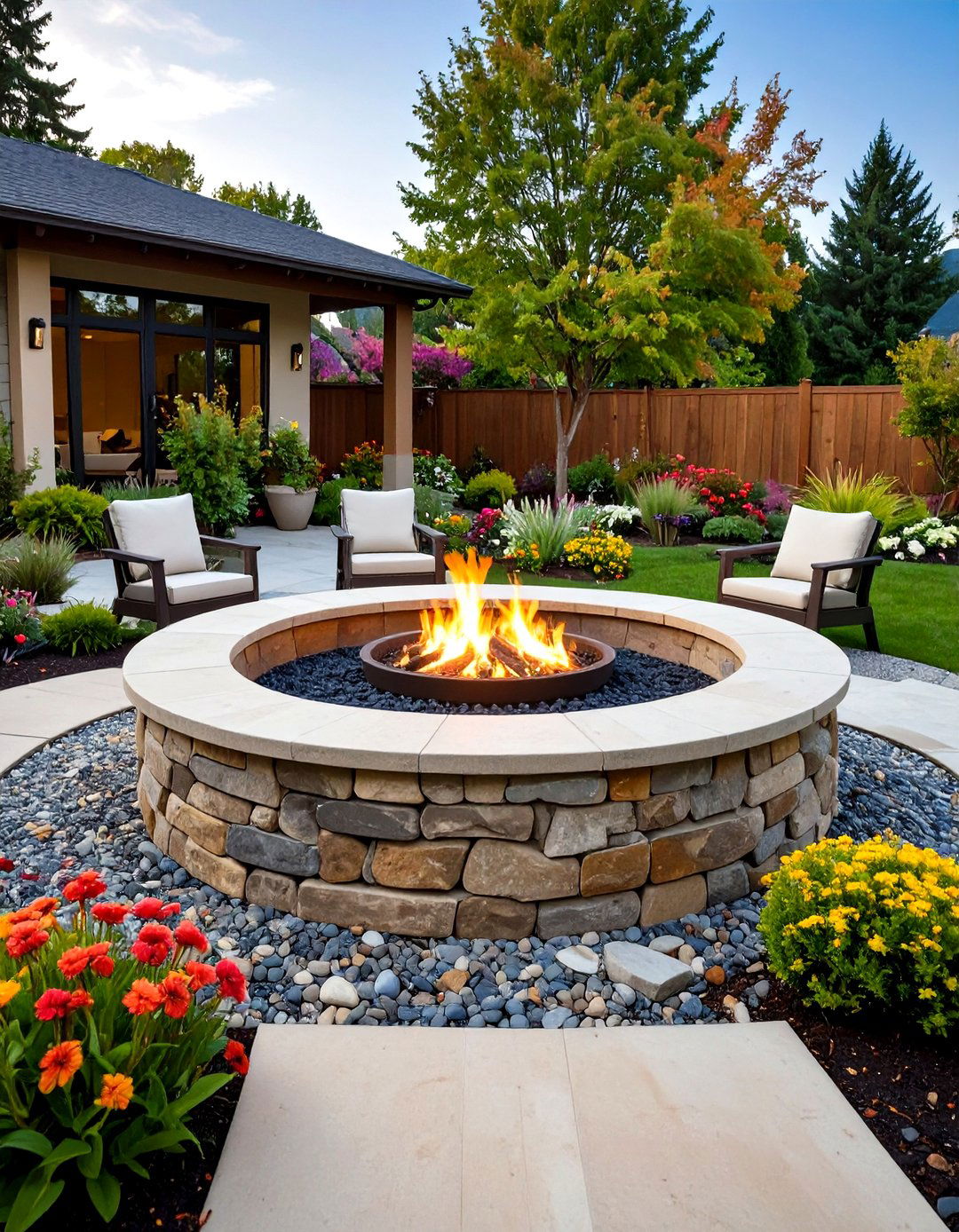
Sunken fire pits create an intimate, theater-like atmosphere by lowering guests’ eye level to the flames. Excavation forms a pit below-grade, lined with heat-resistant stone such as bluestone or limestone. A compacted sand or gravel base facilitates drainage, while the surrounding turf or paving stones can be retained at edge level for a built-in look. The Spruce highlights that sunken designs also mitigate wind interference and can be complemented by in–ground seating ledges carved from natural boulders. This approach is favored in transitional landscapes, where the pit feels carved into the garden itself, inviting lingering conversations around the fire.
5. Flagstone Patio Integrated Fire Pit
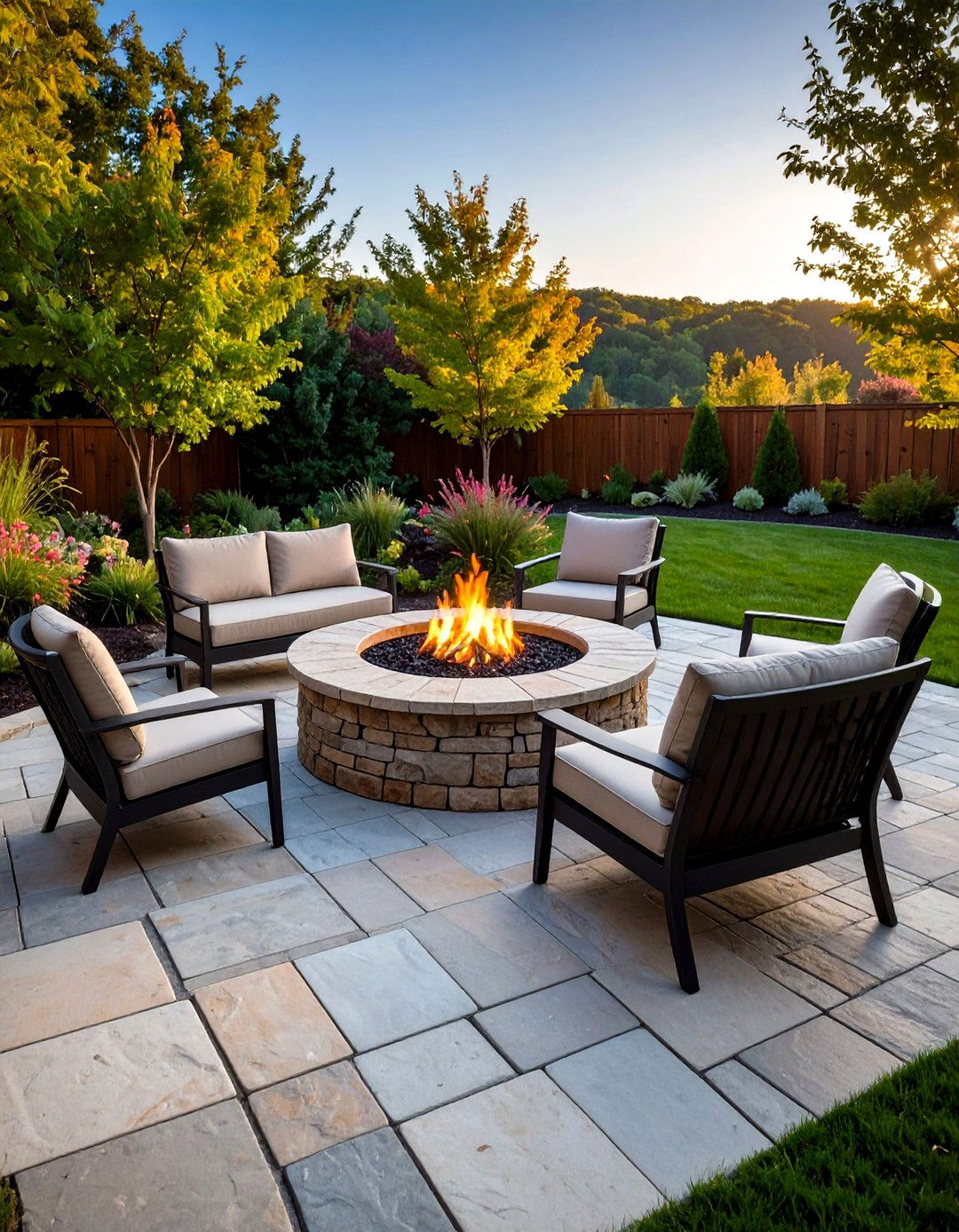
Integrating a fire pit directly into a flagstone patio fosters a seamless transition between hearth and lounging areas. Craftsmen insert a pre-cast fire ring into a cut-out section of flagstone, encircling it with matching slabs trimmed to precise dimensions. This allows for continuous stone flooring, eliminating trip hazards and visual breaks. Better Homes & Gardens emphasizes the convenience of this style, noting that it maximizes patio space and reduces materials waste by leveraging the flagstone offcuts around the pit. To enhance user comfort, flush-mounted covers can convert the pit into a table when not in use.
6. Natural Boulder Seatwall Fire Pit

Incorporating large, irregular boulders as a seatwall around a central pit creates a sculptural, organic installation. Each boulder, chosen for shape and color, is partially buried to anchor it in place. The seatwall naturally contours to form semicircular or full-round seating, eliminating the need for separate benches. This assembly requires careful site selection to ensure level grading and stable footing. HGTV’s design galleries showcase how boulder walls lend a mountain-retreat ambiance and are often paired with gravel or decomposed granite surfacing to reinforce the rustic theme. LED uplights or lanterns can be interspersed for nighttime accenting.
7. Modern Concrete and Stone Fire Table
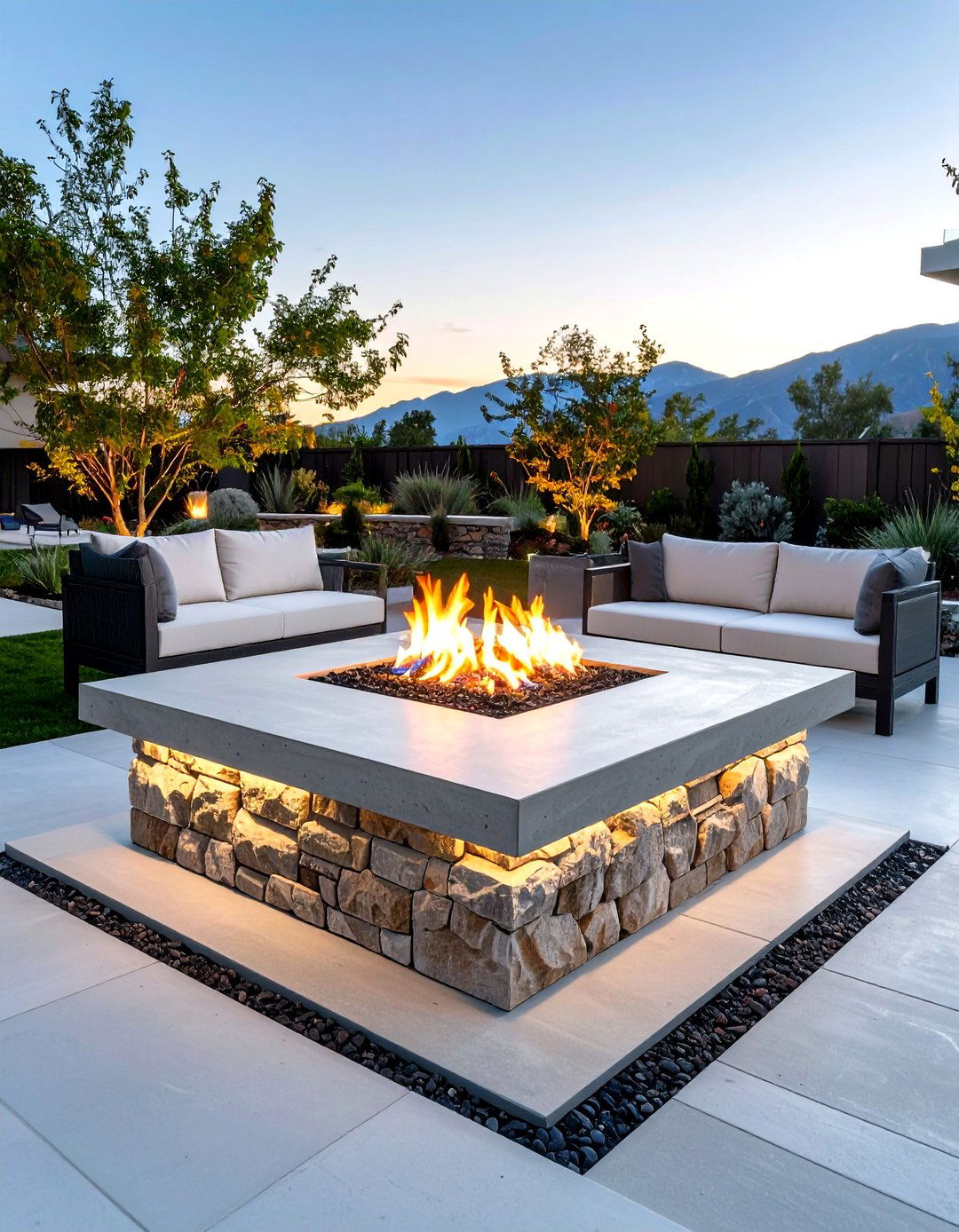
For those favoring contemporary lines, combining a concrete tabletop with a stone-clad base creates a multi-functional fire table. The concrete top is cast to precise dimensions, featuring a drop-in fire basket at its center. The supporting pedestal is clad in thin stone veneers—such as slate or quartzite—for visual warmth and texture. DIY playlists on Bob Vila’s platform detail mixing standard concrete, using tempered glass surrounds, and integrating lava rock media for a polished finish. These fire tables double as coffee tables when not burning, offering versatility for urban patios and rooftop terraces.
8. Paver Block Ring Fire Pit

Modular concrete paver blocks provide a user-friendly route to building a round or square fire pit. The blocks interlock for stability and can be stacked without mortar, allowing offseason disassembly. Quikrete and home centers stock retaining-wall-style units designed for outdoor pits, facilitating uniform joints and effortless leveling. Edging stones on top define a smooth seating ledge. This method, highlighted in many BHG tutorials, is ideal for DIYers seeking a weekend project with clear, reusable materials.
9. Brick-and-Stone Hybrid Fire Pit
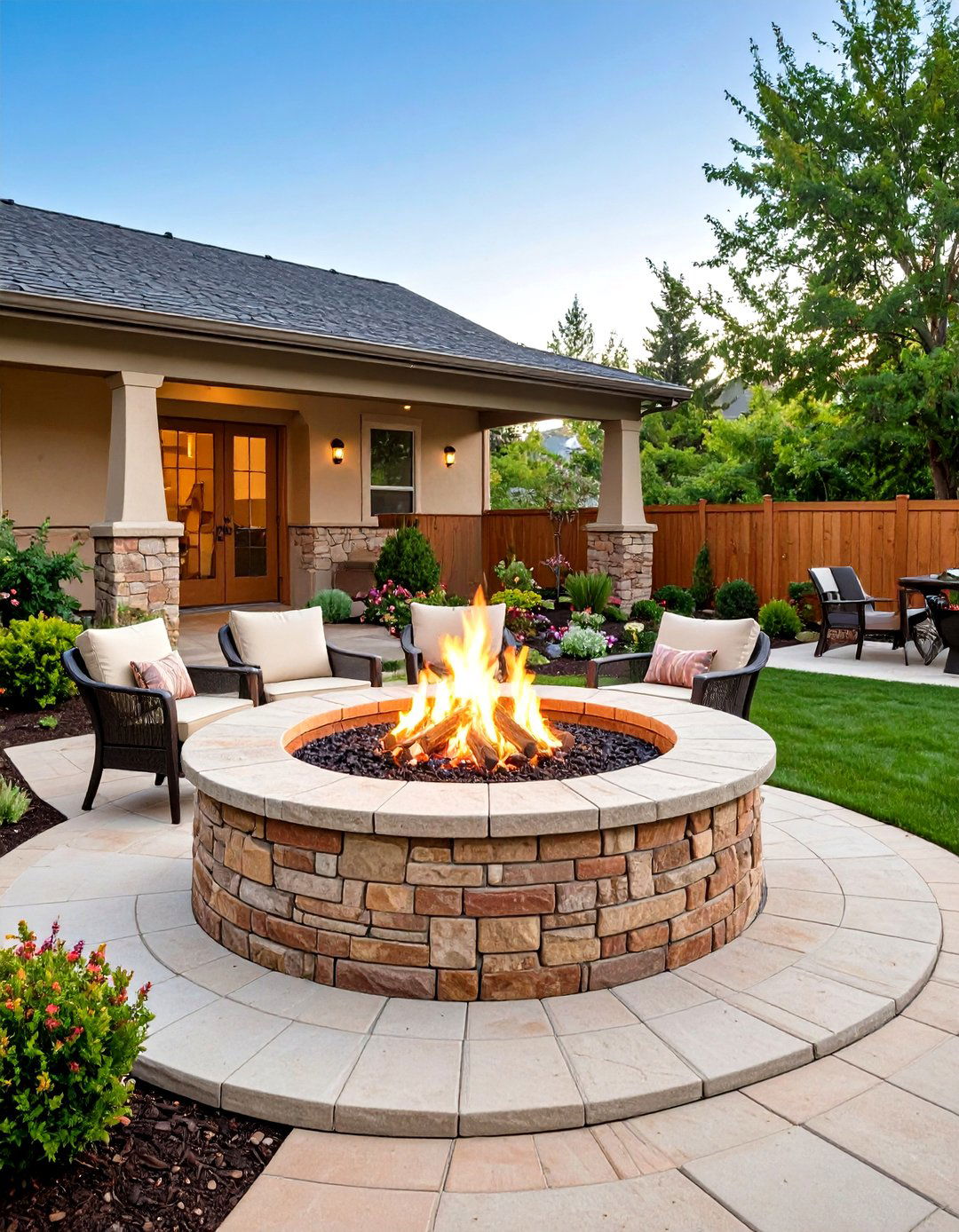
Marrying brick and stone offers a timeless aesthetic: brick interior rings withstand intense heat, while outer stone veneers provide decorative flair. Masons construct the fire bowl with refractory bricks, then apply a veneer of thin-cut stone or cultured stone around the exterior. This approach combines the durability of brick with stone’s rustic charm, often showcased in Southern Living’s design spreads. The contrasting materials also permit creative color combinations—dark bricks paired with lighter fieldstone, for instance—adding personalized touches to traditional motifs.
10. Sunken Flagstone Fire Pit with Gravel Pad
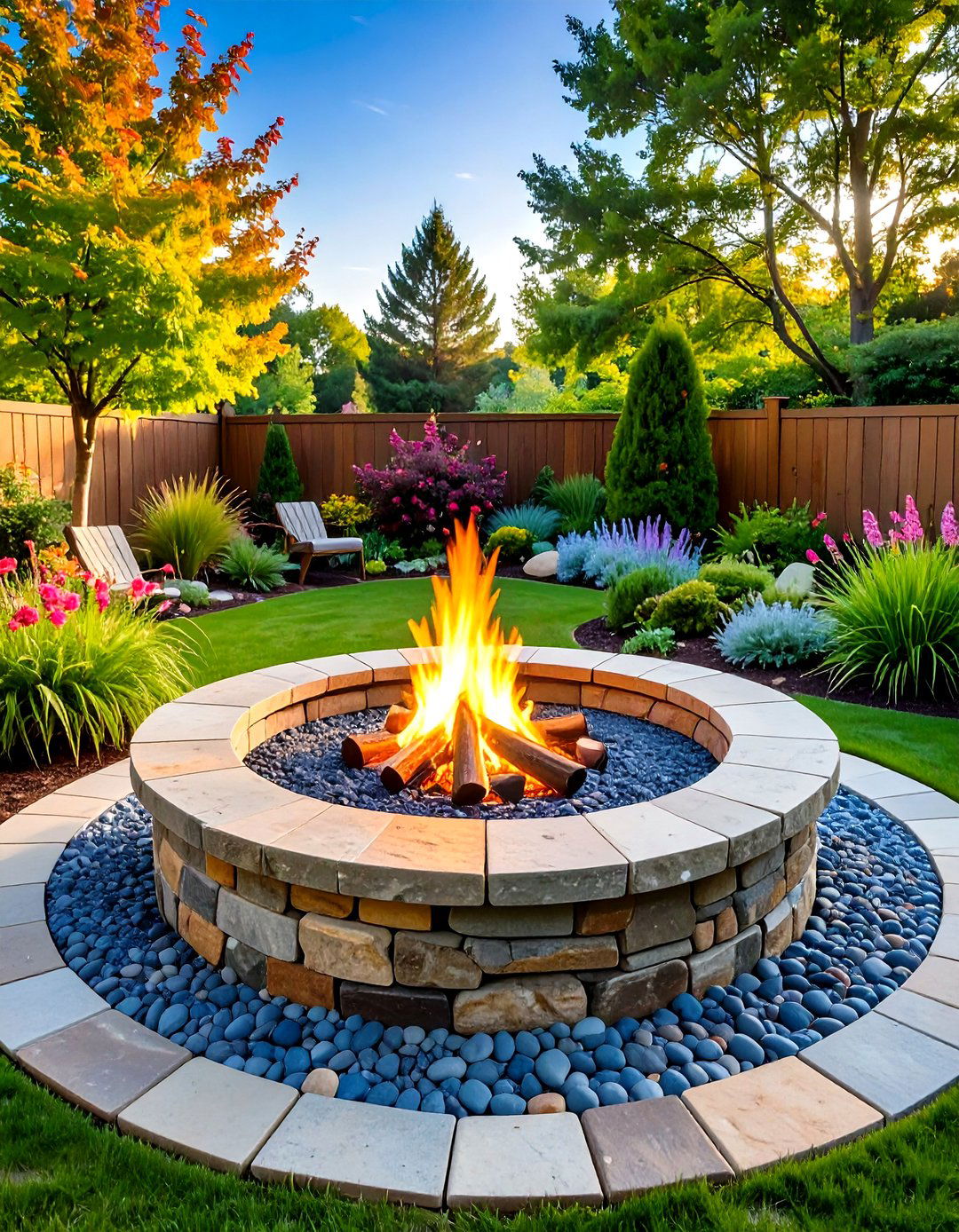
A variation on the sunken pit, this design incorporates a gravel pad surrounded by flagstone edging. Excavation to below grade is filled with compacted pea gravel for drainage and leveling. A flagstone border, mortared or dry-stacked, retains the gravel and frames the fire bowl. The Spruce notes that this style harmonizes with naturalistic landscapes, while the gravel infill radiates heat and improves footing underfoot. Accent plantings like ornamental grasses or native groundcovers soften the perimeter.
11. Portable Stone Fire Ring
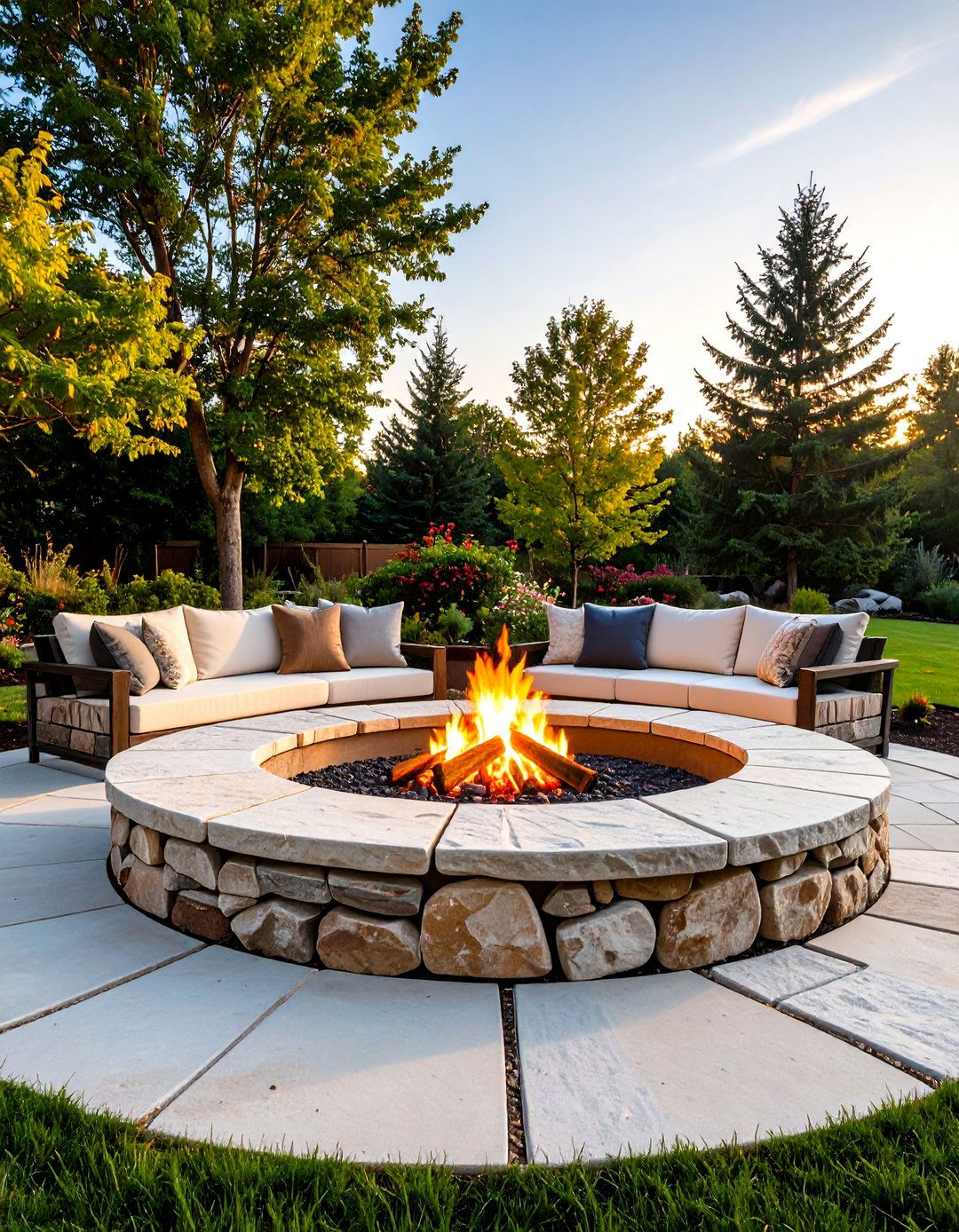
For renters or seasonal setups, a portable stone fire ring assembled from interlocking stone panels offers flexibility. Each panel secures with pins or clips, allowing quick assembly and disassembly. Materials like stacked slate or manufactured stone simulate authentic masonry while remaining lightweight. Architectural Digest spotlights select brands that have streamlined this concept into kits, including steel stabilizers and heat-resistant liners. Portability enables users to position the fire ring in different zones of their yard or balcony, catering to evolving entertainment needs.
12. Built-In Stone Pit with Grill Attachment
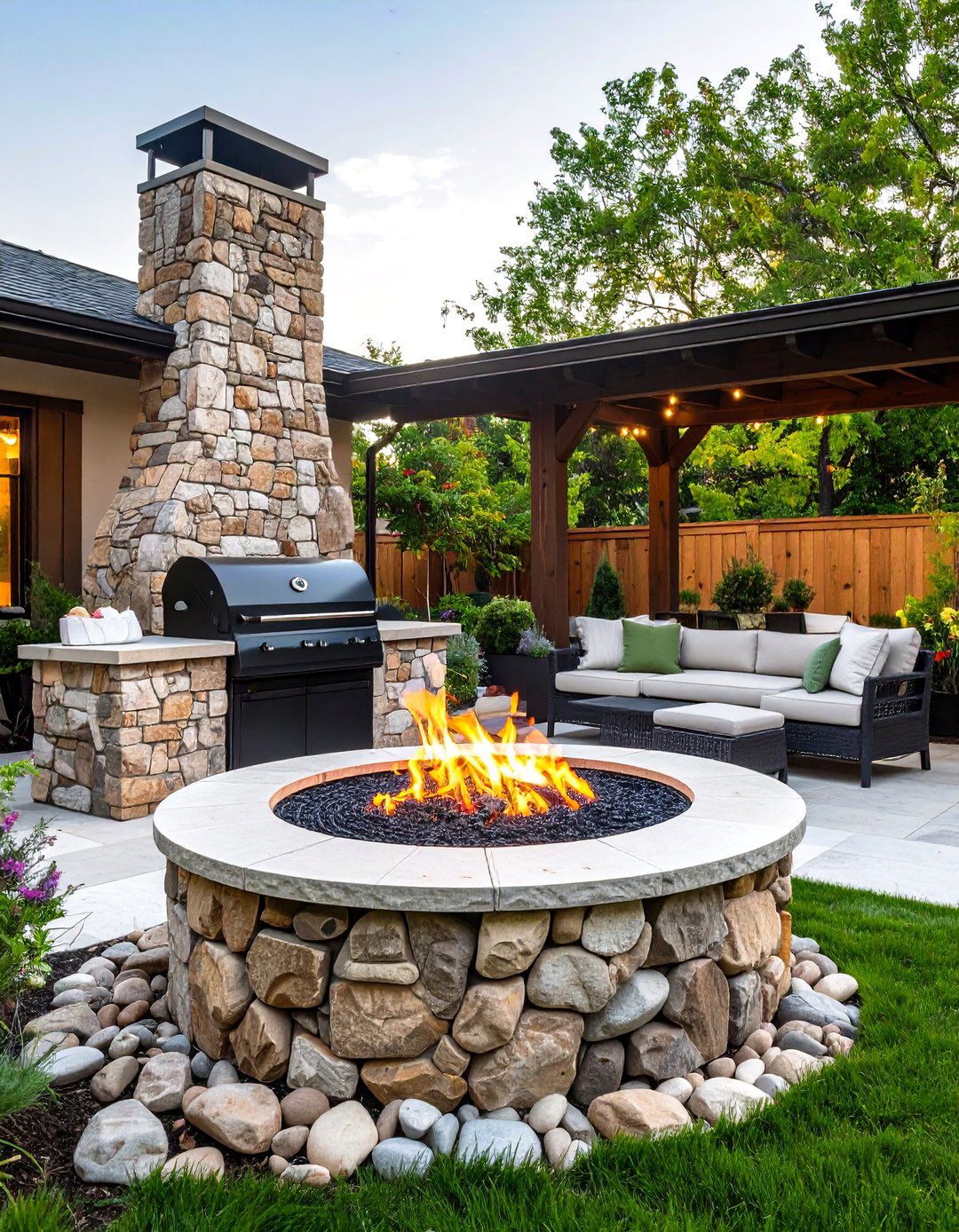
Combining a fire pit with a grill grate turns a relaxation zone into an alfresco cooking station. Masonry contractors construct a stone base and incorporate stainless-steel brackets to support a removable grill grate. The fire bowl itself can be lined with firebrick for heat retention, while the outer veneer matches patio coping or pathway stones. Bob Vila’s tutorials recommend mild-steel grates for even cooking and custom-fabricated stainless options for longevity. This hybrid model is perfect for homeowners who entertain with both food and fellowship.
13. Stacked Slate Pillar Fire Pit
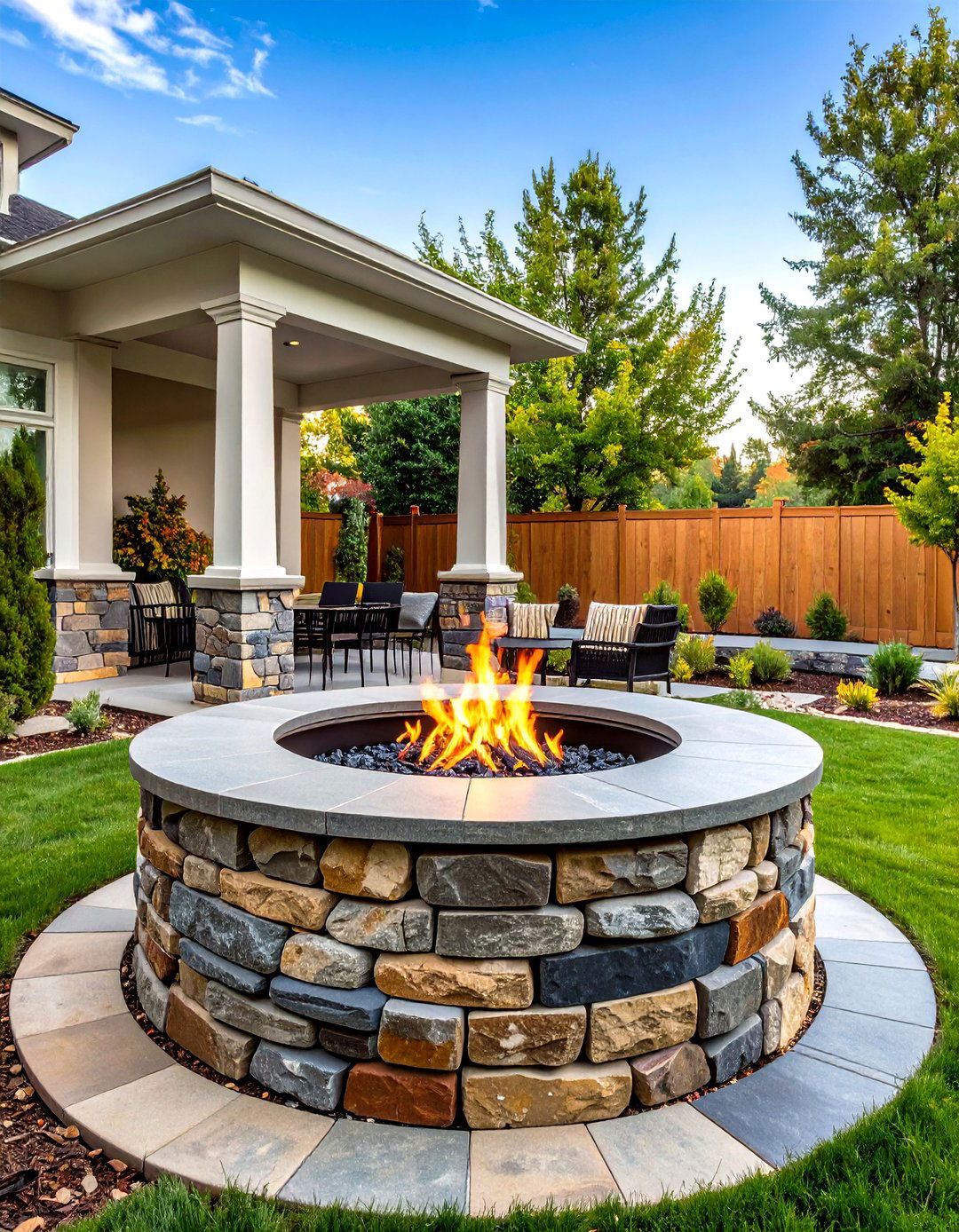
A columnar pillar of stacked slate offers a sculptural twist: the fire emerges from a recessed metal bowl atop the stone stack. Builders use thin-cut slate tiles, stacking them in alternating orientation for visual rhythm. The result is a vertical focal point that suits narrow urban patios or poolside borders. HGTV’s modern design roundups illustrate how integrated alloy bowls and lava-rock media combine function with minimalist form. This compact footprint makes it a space-efficient choice for tighter outdoor rooms.
14. In-Ground Cobblestone Fire Pit
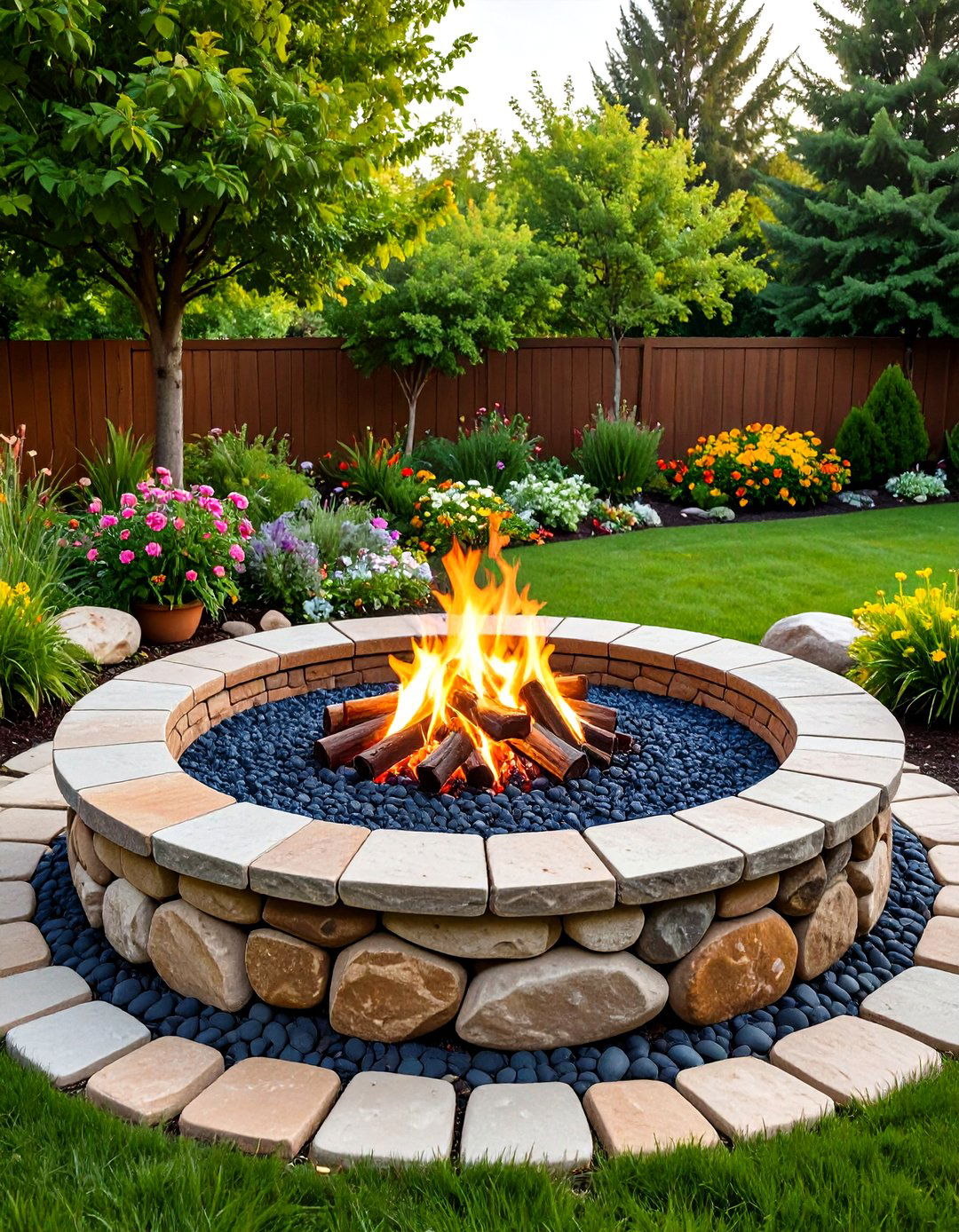
Cobblestones produce a charming European vibe when set in a ring over a shallow pit. Contractors lay a sand bed, position the stones in circular fashion, and backfill joints with polymeric sand. The natural variance in cobblestone hues crafts an old-world mosaic. Southern Living applauds this approach for its textural richness and the way the small-scale stones conform to curves elegantly. For durability, a metal fire ring is often inserted to protect the stones from direct flame contact.
15. Reclaimed Limestone Block Fire Pit
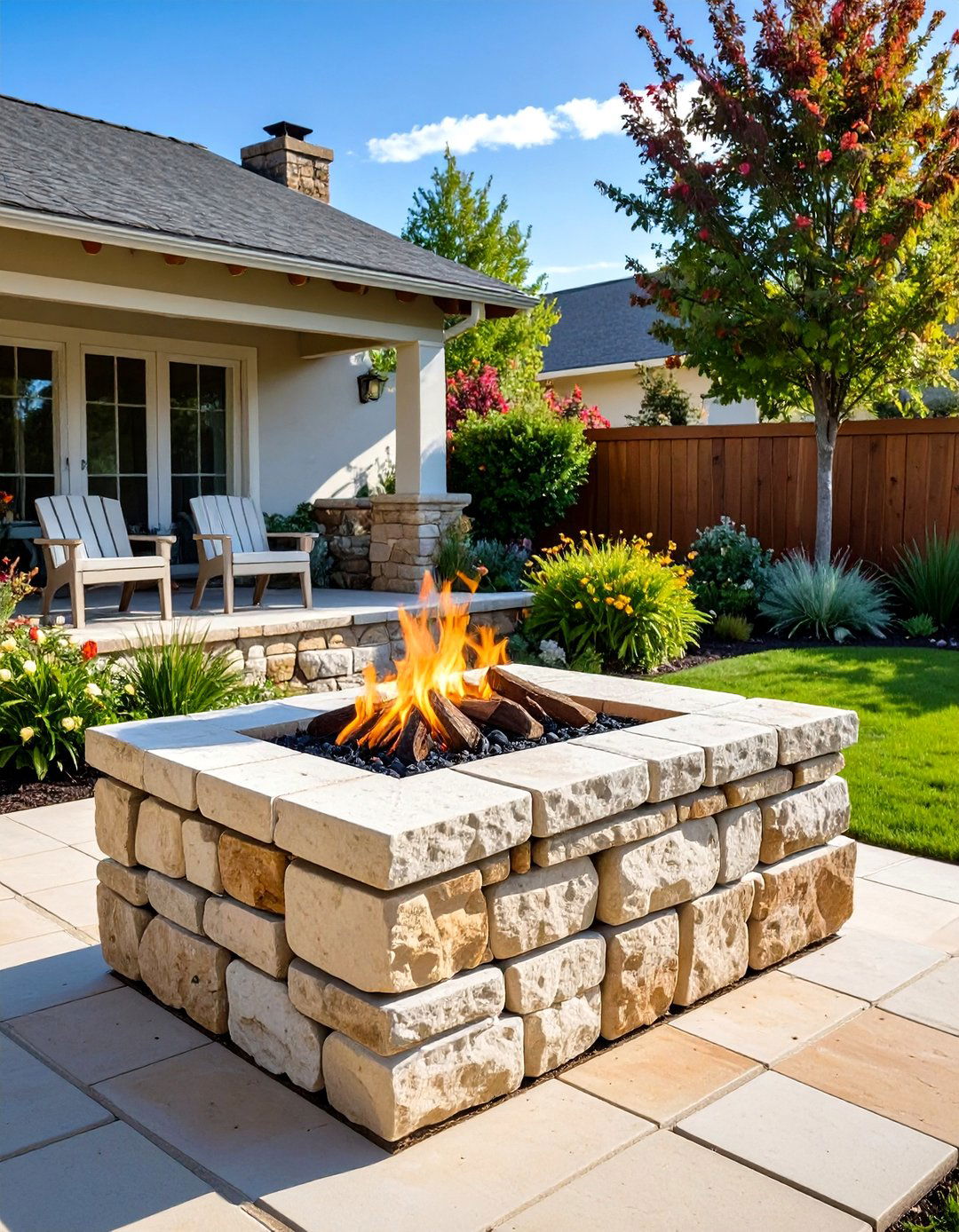
Utilizing reclaimed limestone blocks—often salvaged from old farm walls—lends history and patina to fire pit projects. Each block, characterized by weathered faces and muted tones, is selected for stable stacking. Mortarless dry-stacking preserves the stone’s aged charm while facilitating breathability. BHG’s heritage design profiles highlight how this sustainable choice reduces waste and enriches landscapes with a sense of place. The limestone’s thermal mass also radiates warmth long after the flames subside.
16. Circular Slate Tile Fire Feature

For refined minimalism, a circular pit clad entirely in slate tile offers a polished look. Thin slate is adhered over a concrete block shell, ensuring crisp edges and uniform surface texture. The inset fire bowl sits flush with the tile floor, creating a seamless plane when covered with a lid. Architectural Digest notes that selecting honed or riven finishes alters reflectivity and tactile quality, allowing homeowners to tailor the aesthetic from matte to subtly lustrous. This approach suits upscale terraces and low-maintenance gardens.
17. Brick Paver and Stone Veneer Pit
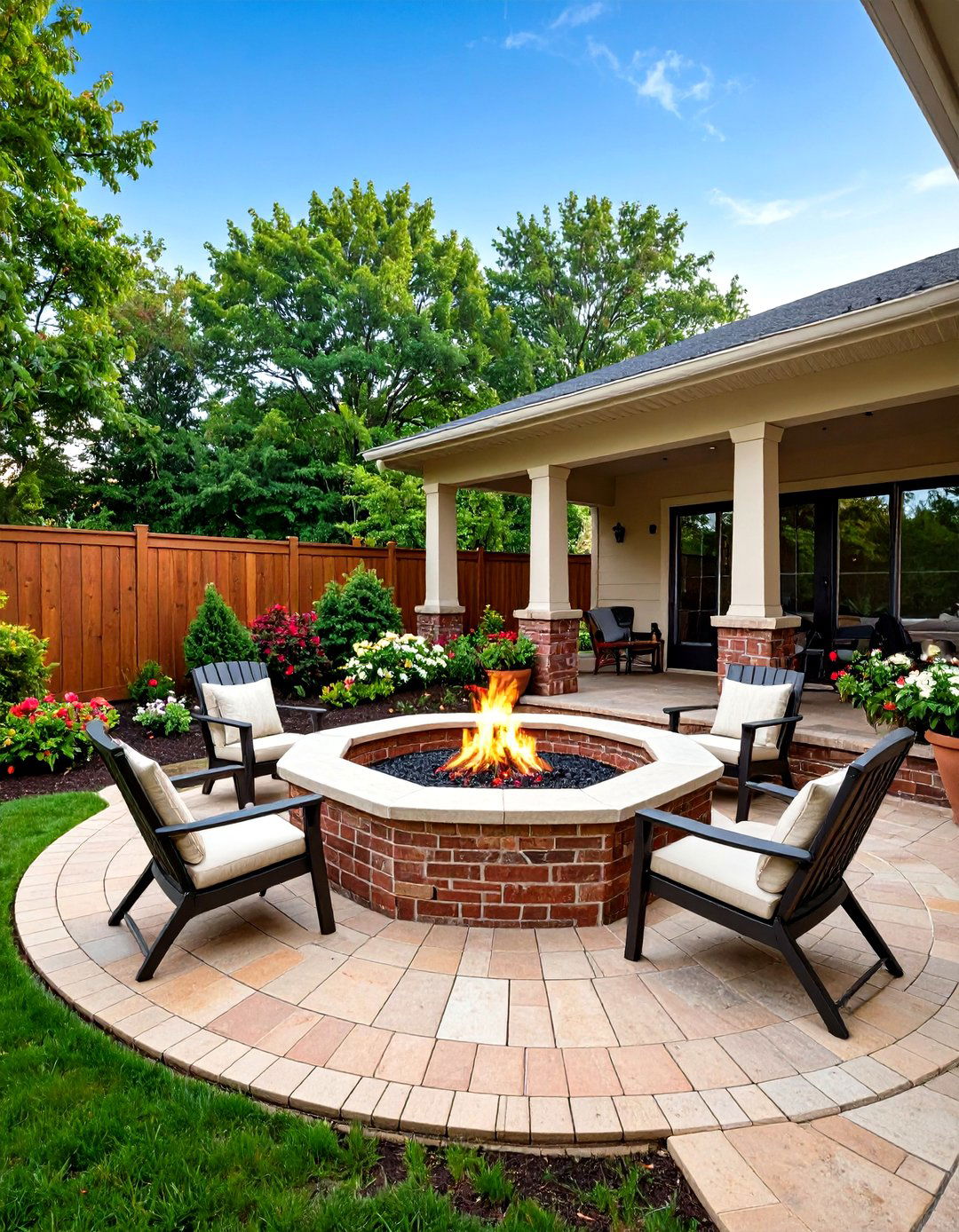
Combining standard brick pavers for the inner ring with a cultured stone veneer exterior marries functionality with decorative appeal. The bricks resist high heat, while the faux-stone veneer provides consistent color and pattern. This hybrid method simplifies installation and reduces the need for skilled stonemasonry. Bob Vila’s how-to guides recommend interlocking edging pavers on top to form a seating ledge, enhancing comfort and serviceability. The result is a cohesive feature that bridges rustic and contemporary sensibilities.
18. Sunken Flagstone and Gravel Nook

A modification of the sunken pit, this design integrates tiered flagstone seating steps descending into a gravel-lined fire bowl. Excavation creates graduated levels; each step is surfaced with flagstone slabs anchored in mortar. The pit base is filled with compacted pea gravel to manage moisture. The Spruce highlights that such multi-level nooks foster immersive seating and sculptural drama, ideal for landscapes with sloping topography. Accent plantings at each tier’s edge add softness and privacy.
19. Contemporary Stone-Encased Fire Bowl
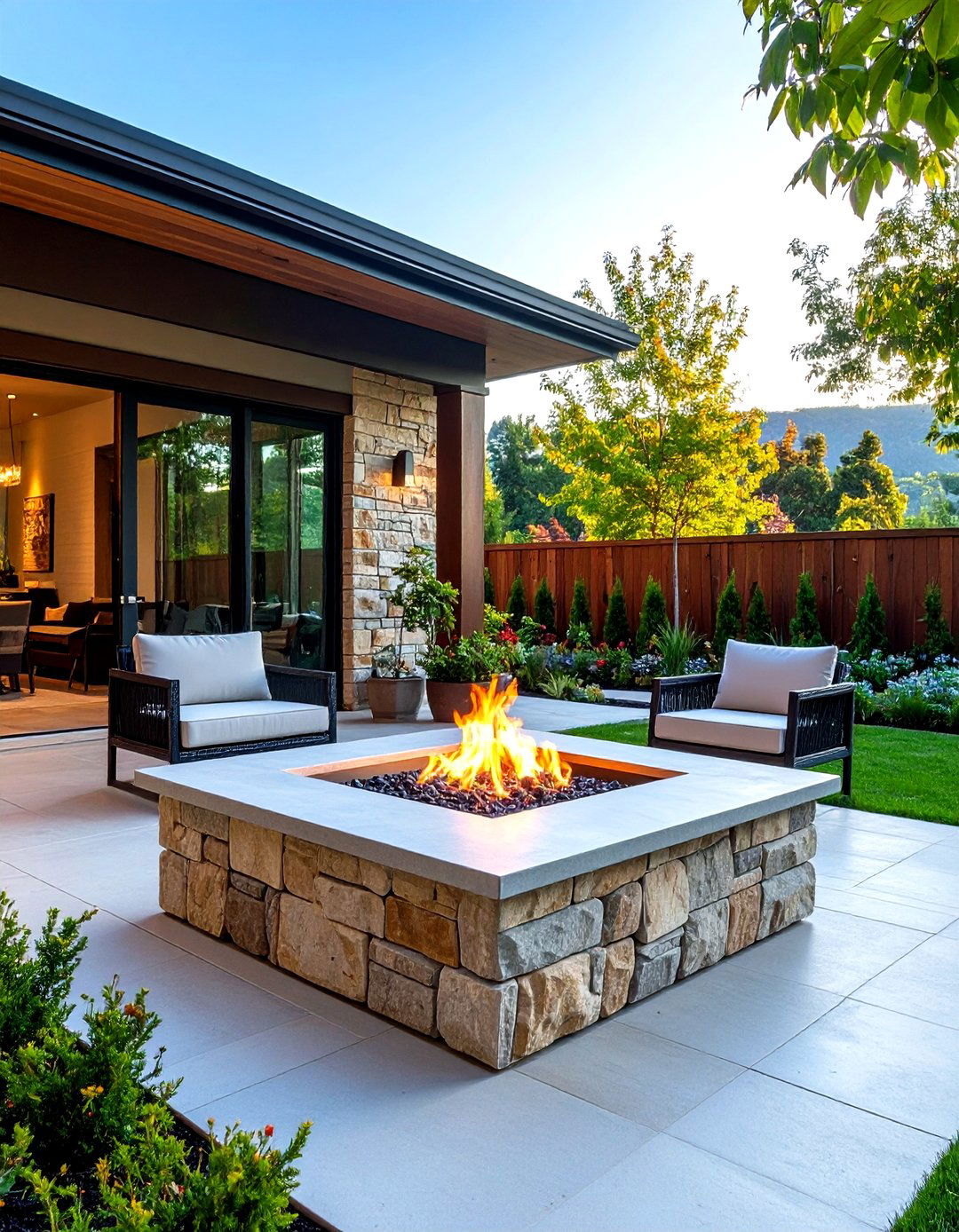
A sleek metal fire bowl encased within a square stone surround offers a modern sculpture-like aesthetic. A stainless-steel bowl sits inside a stone-clad cube of granite or marble veneer. The cube’s clean lines contrast the organic flame, creating a dynamic visual tension. HGTV’s trend reports note that such standalone features work well on decks and roof terraces where conventional pits may be impractical. Integrated gas lines and electronic ignition options elevate functionality and safety.
20. Curved Stone Bench and Fire Ring Ensemble
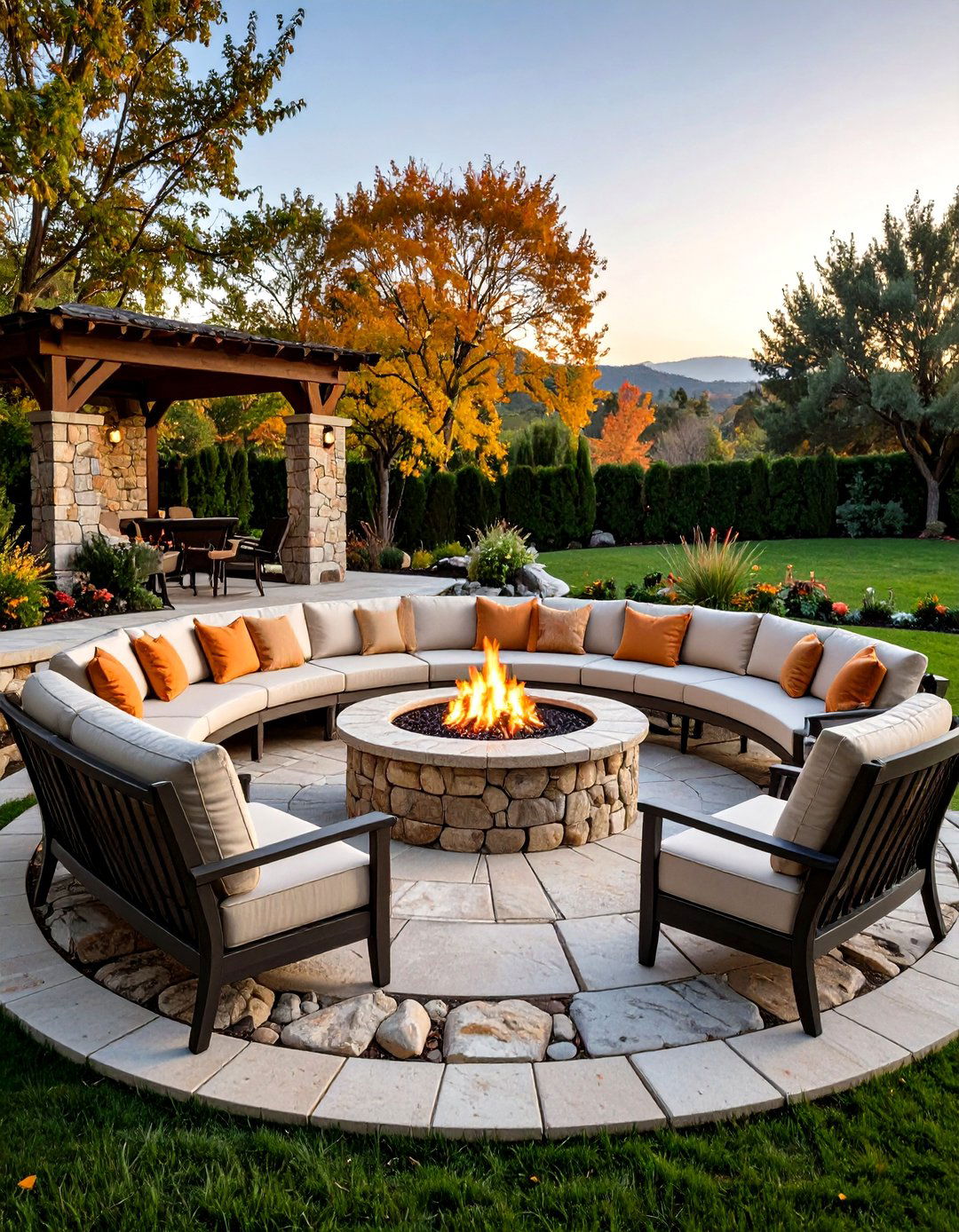
Architecturally curving stone benches around a central fire ring creates a communal amphitheater effect. The benches, crafted from cut stone or poured concrete with stone veneer, form a continuous arc. The fire ring—often a pre-cast steel unit—sits flush with graded stone flooring for a unified platform. Southern Living showcases how this arrangement fosters inclusive sightlines and group dynamics, reminiscent of ancient communal hearths. Solar-powered uplights embedded under bench edges can illuminate the setting sans overhead wiring.
Conclusion:
Stone fire pits embody a harmonious blend of form, function, and natural charm, transforming ordinary backyards into focal gathering spots. From the rugged allure of river rock circles to the refined elegance of slate-tiled tables, each design capitalizes on stone’s durability and aesthetic versatility. Whether integrated into patios, sunk into the earth, or fashioned as portable kits, these twenty ideas demonstrate how materials and installation methods adapt to varied landscapes, budgets, and styles. By selecting the right stone type—flagstone, fieldstone, boulders, or veneer—and considering factors like drainage, seating, and safety, homeowners can craft enduring outdoor hearths that invite convivial evenings around the fire.


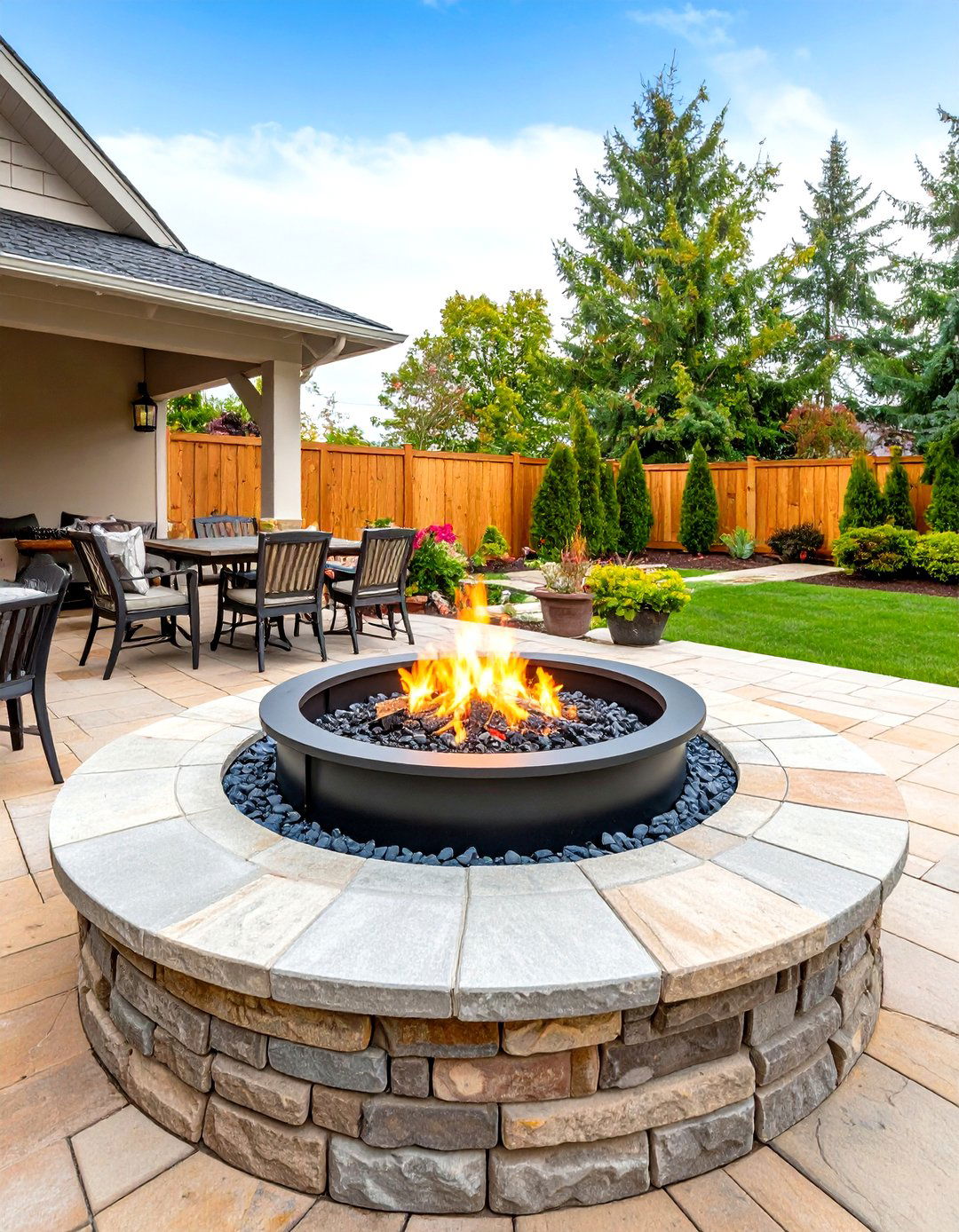
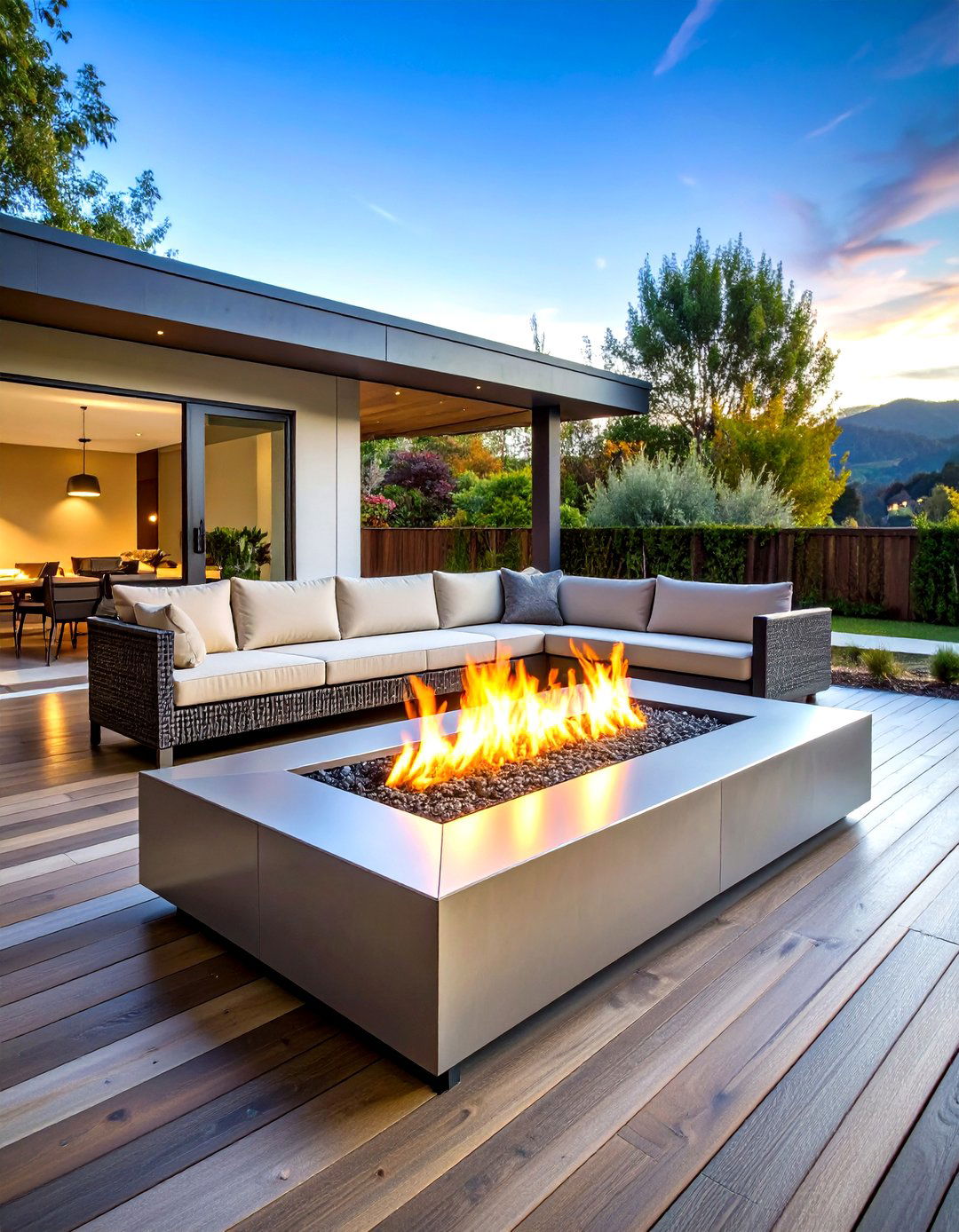
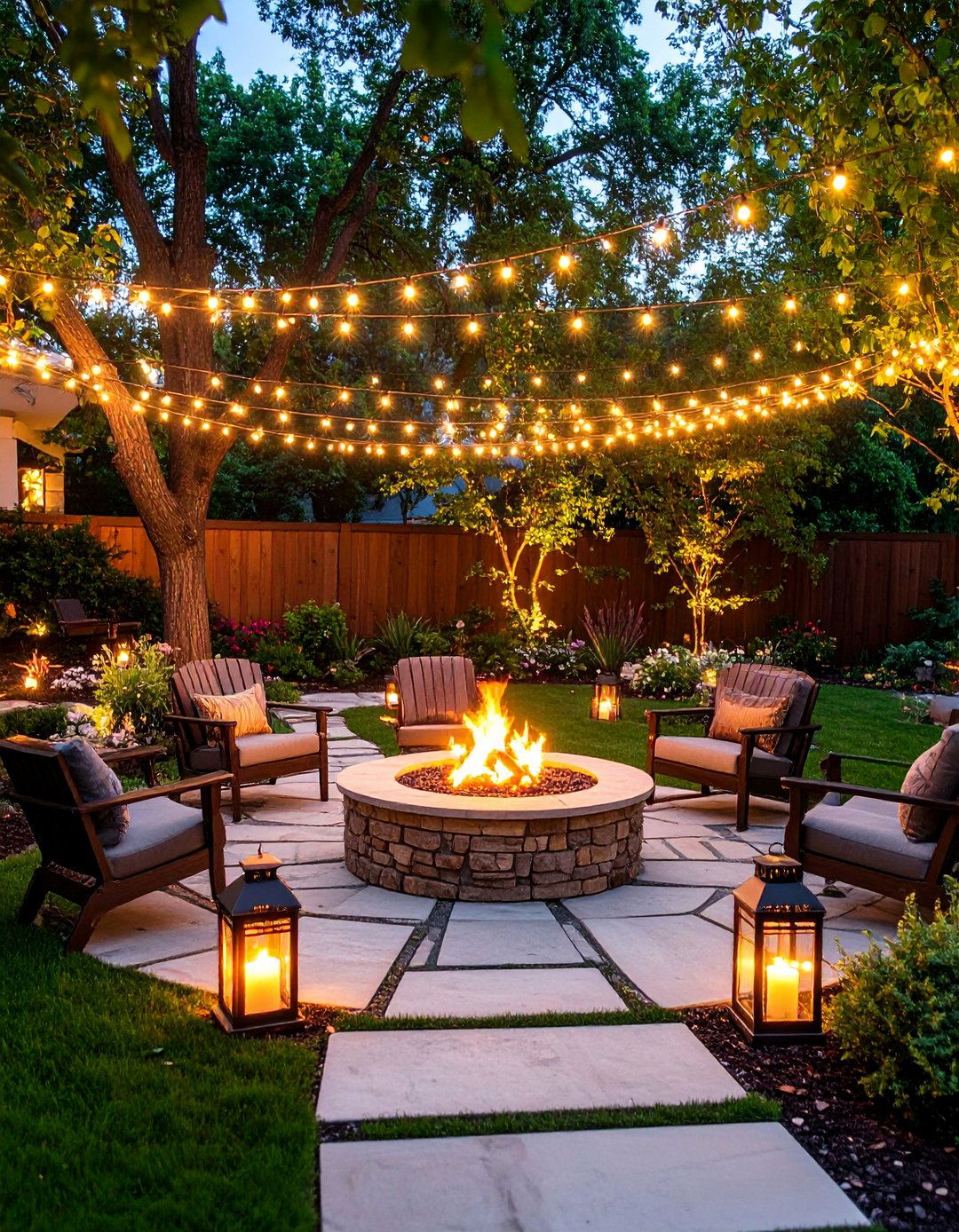
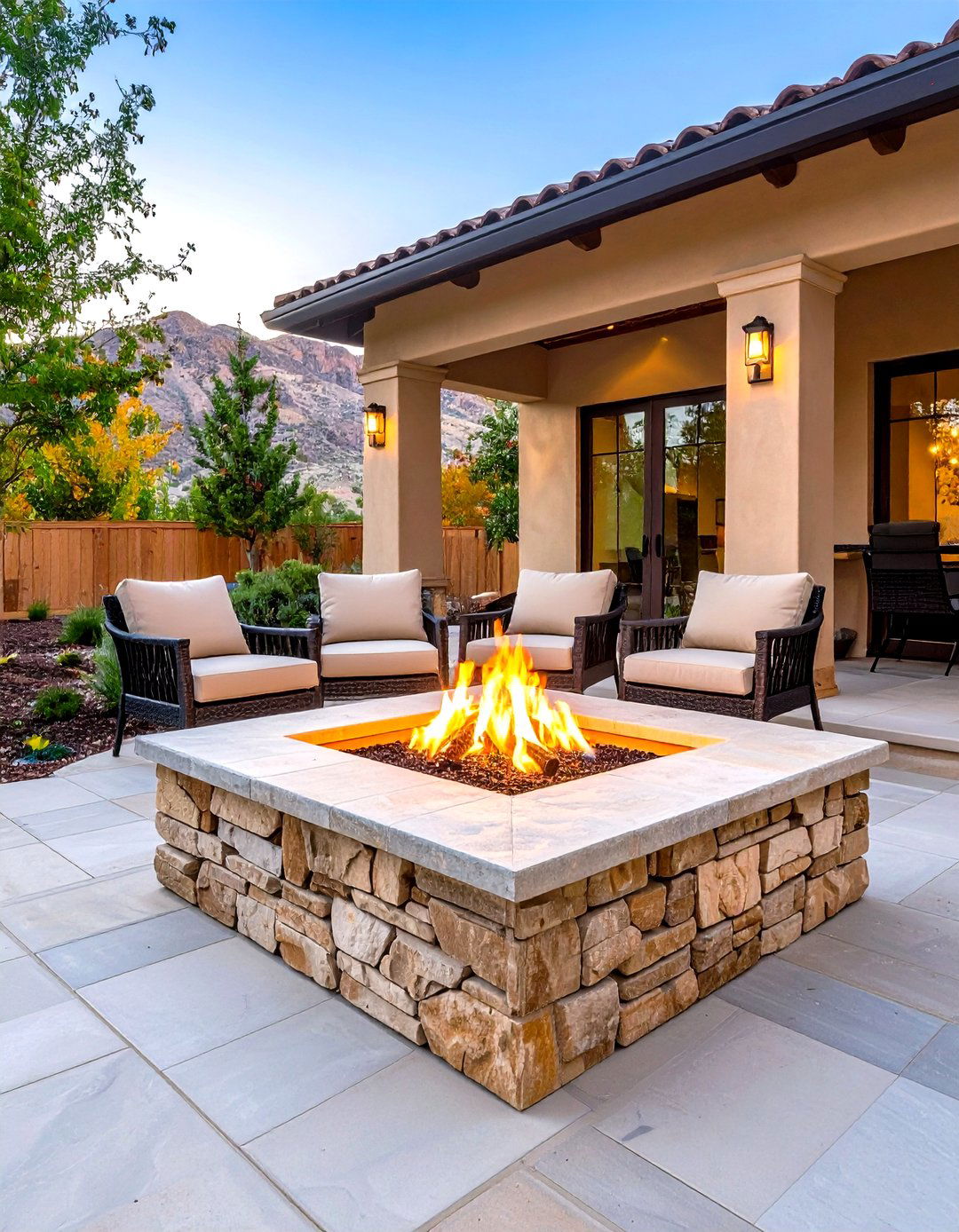


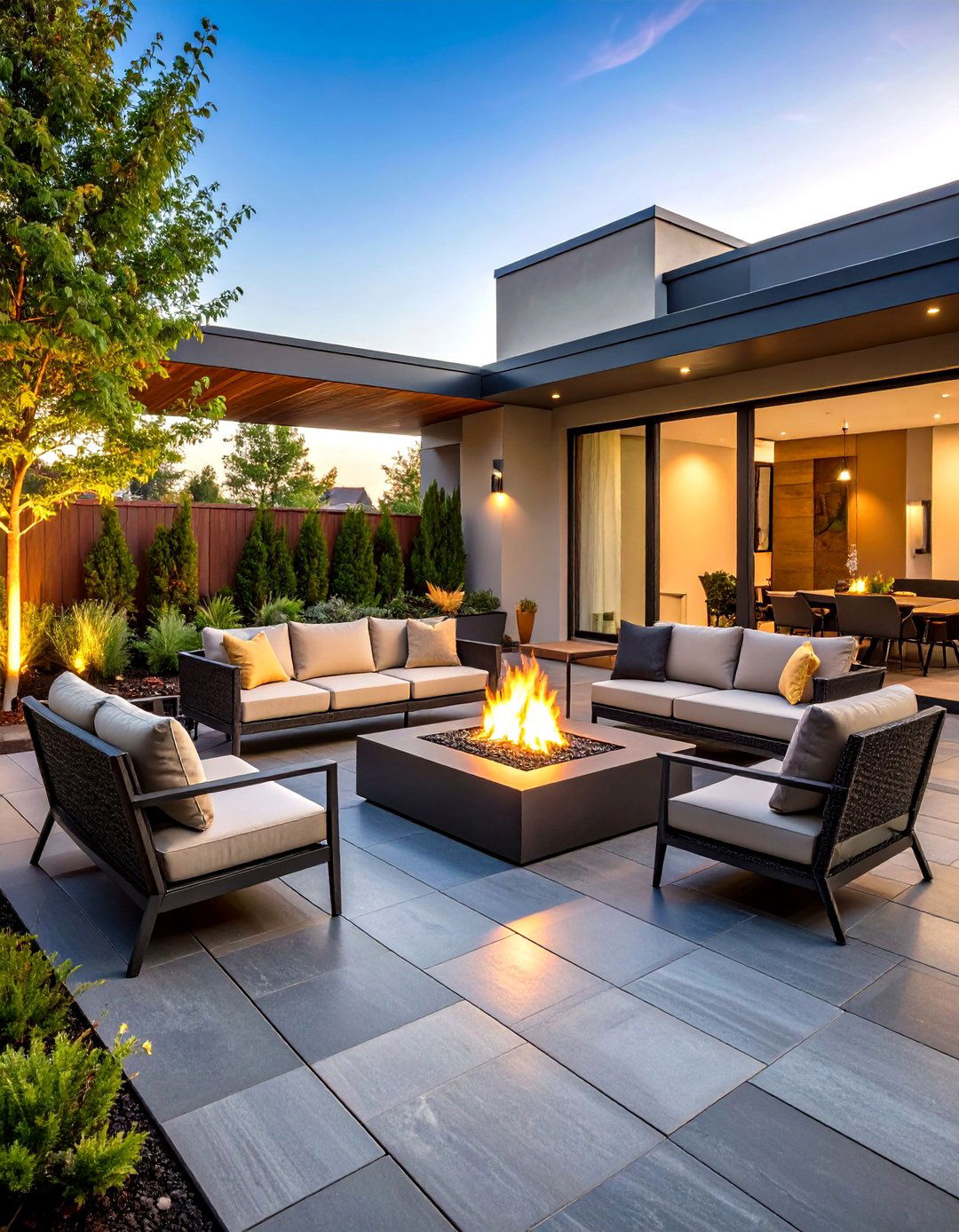



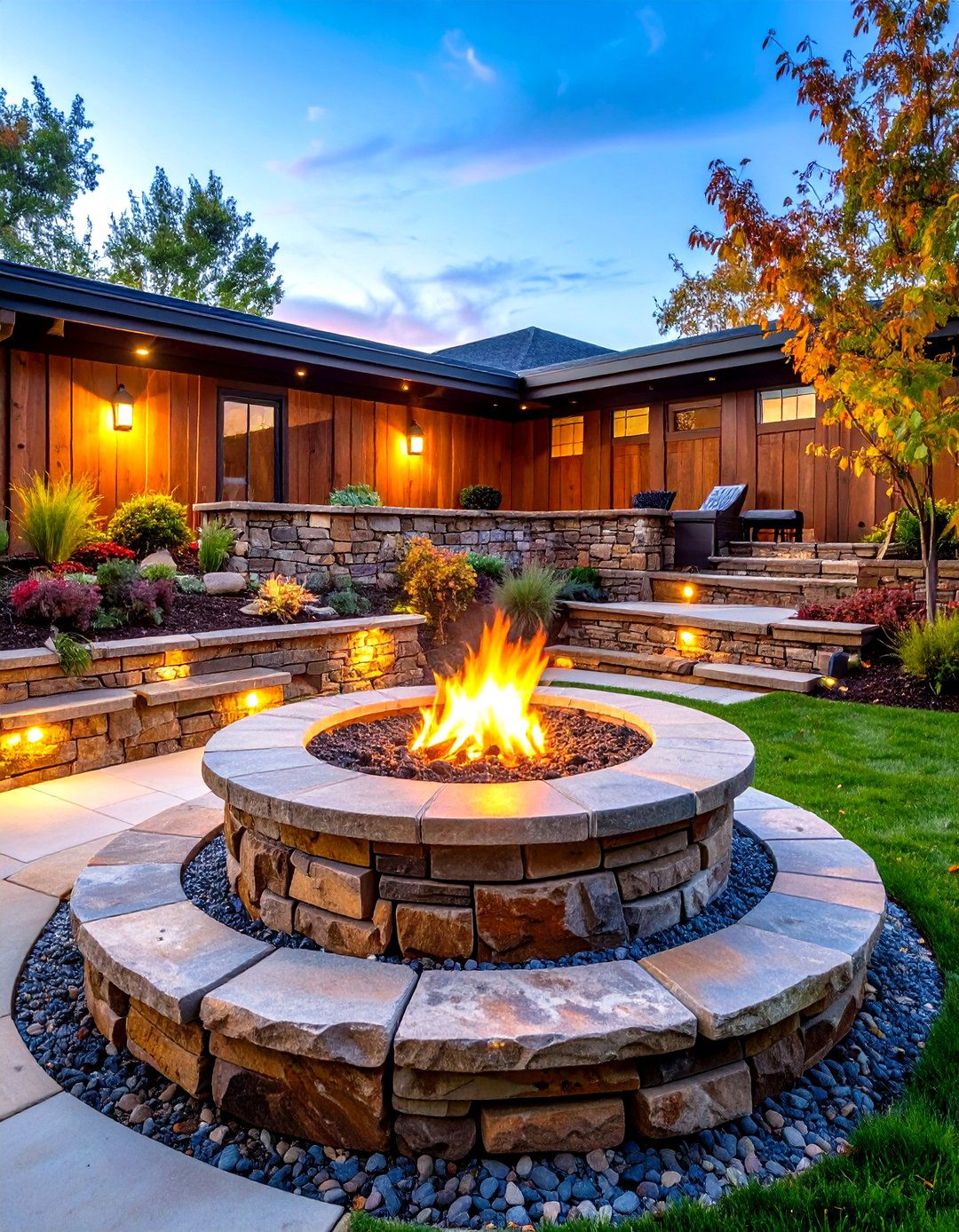
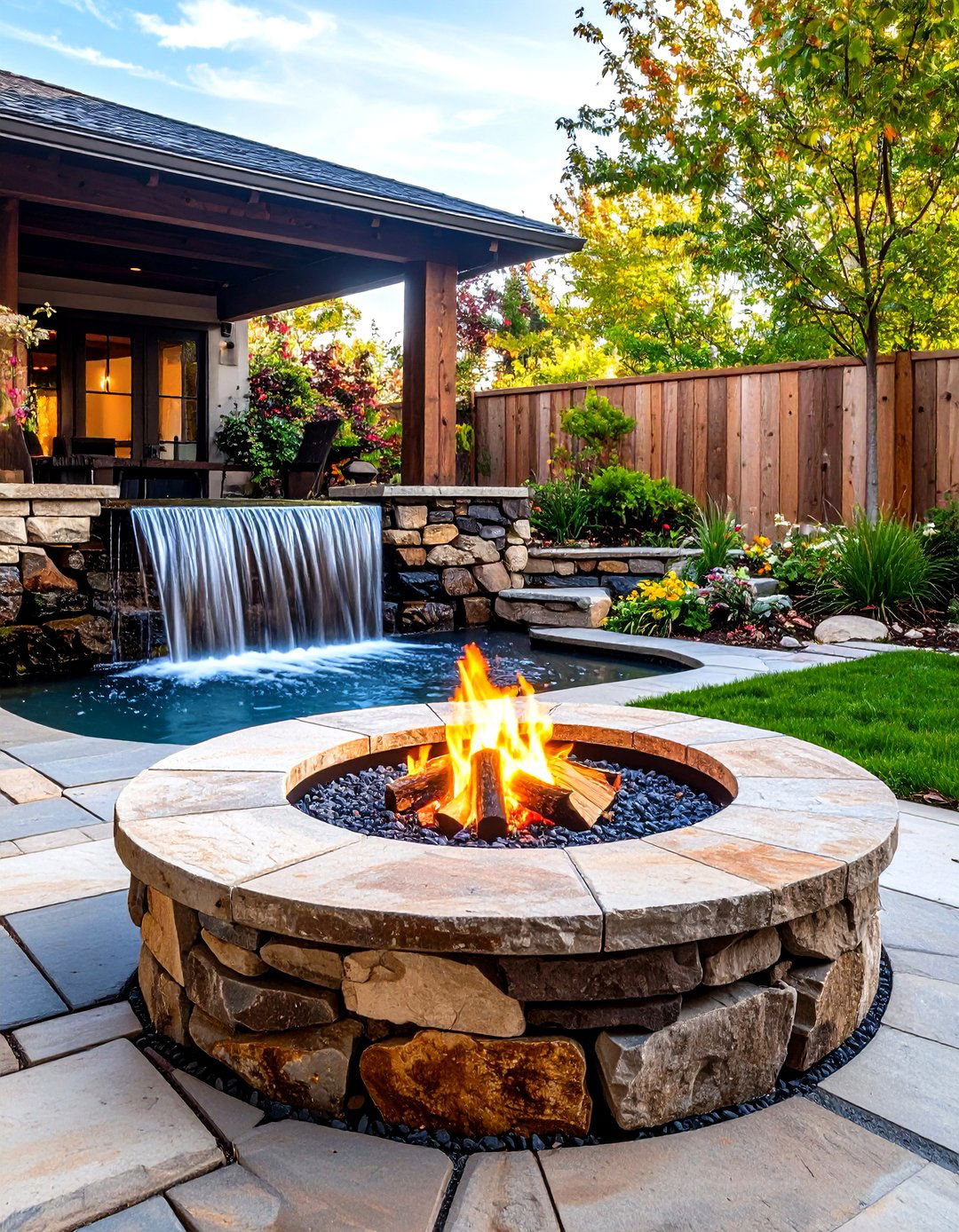
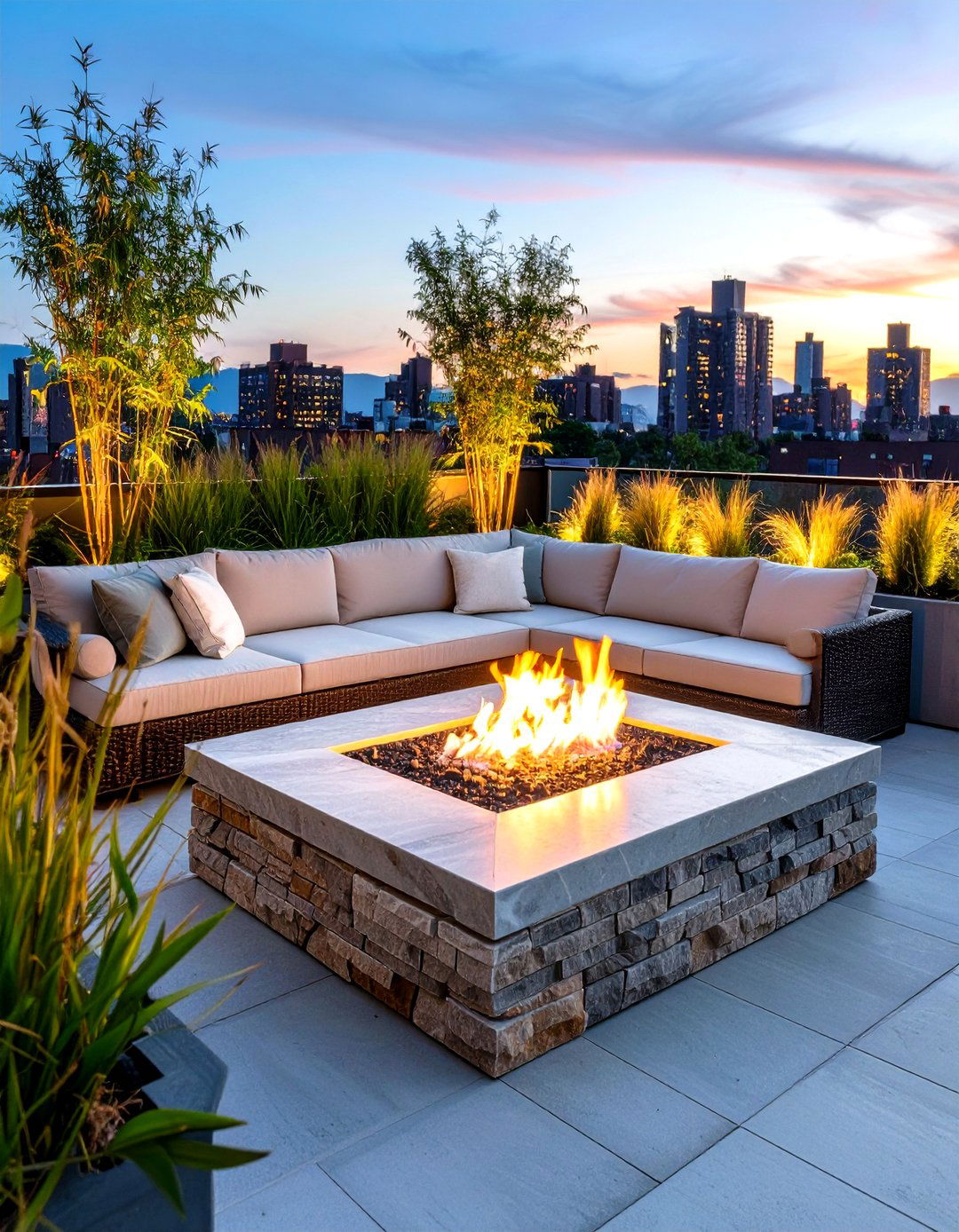
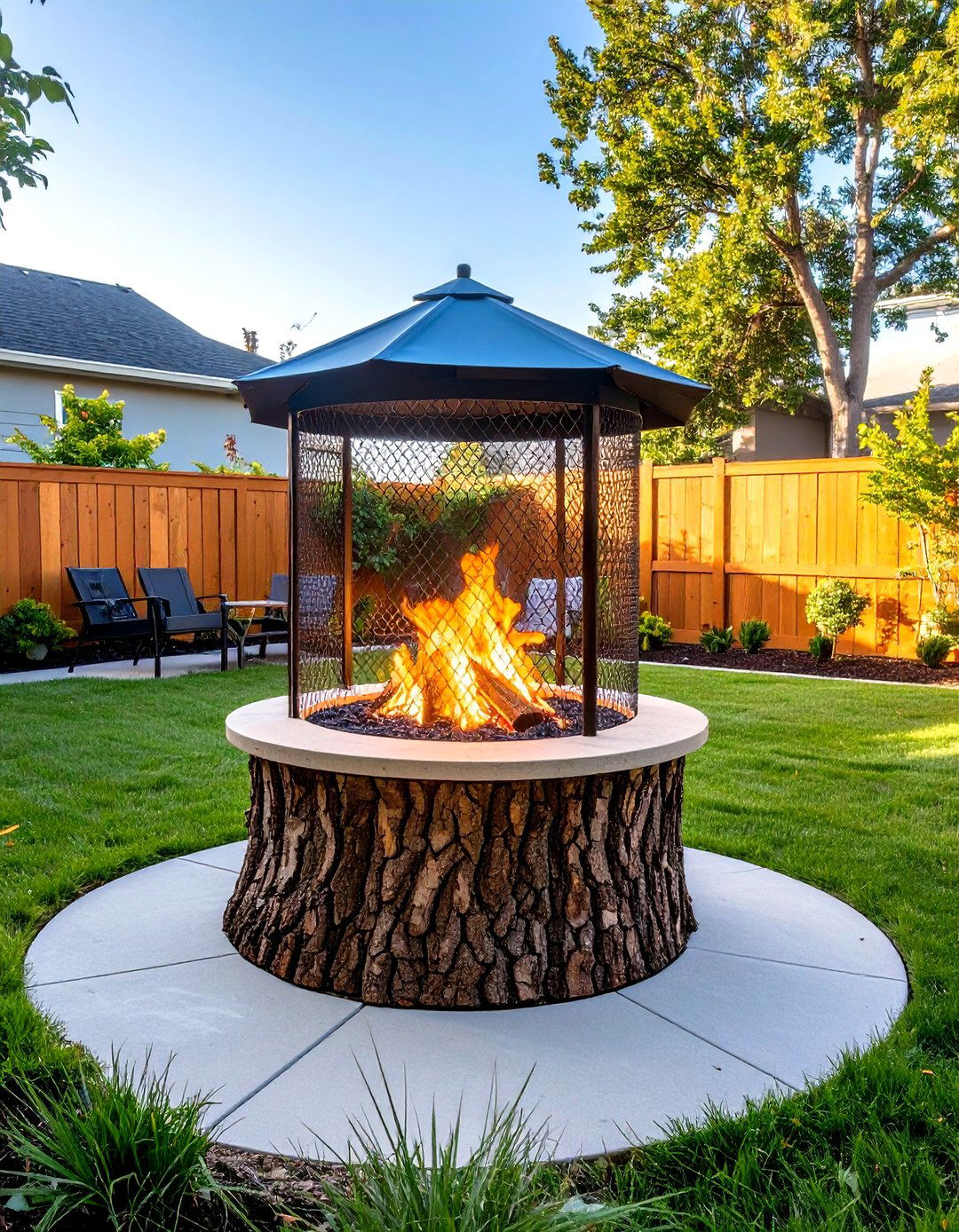
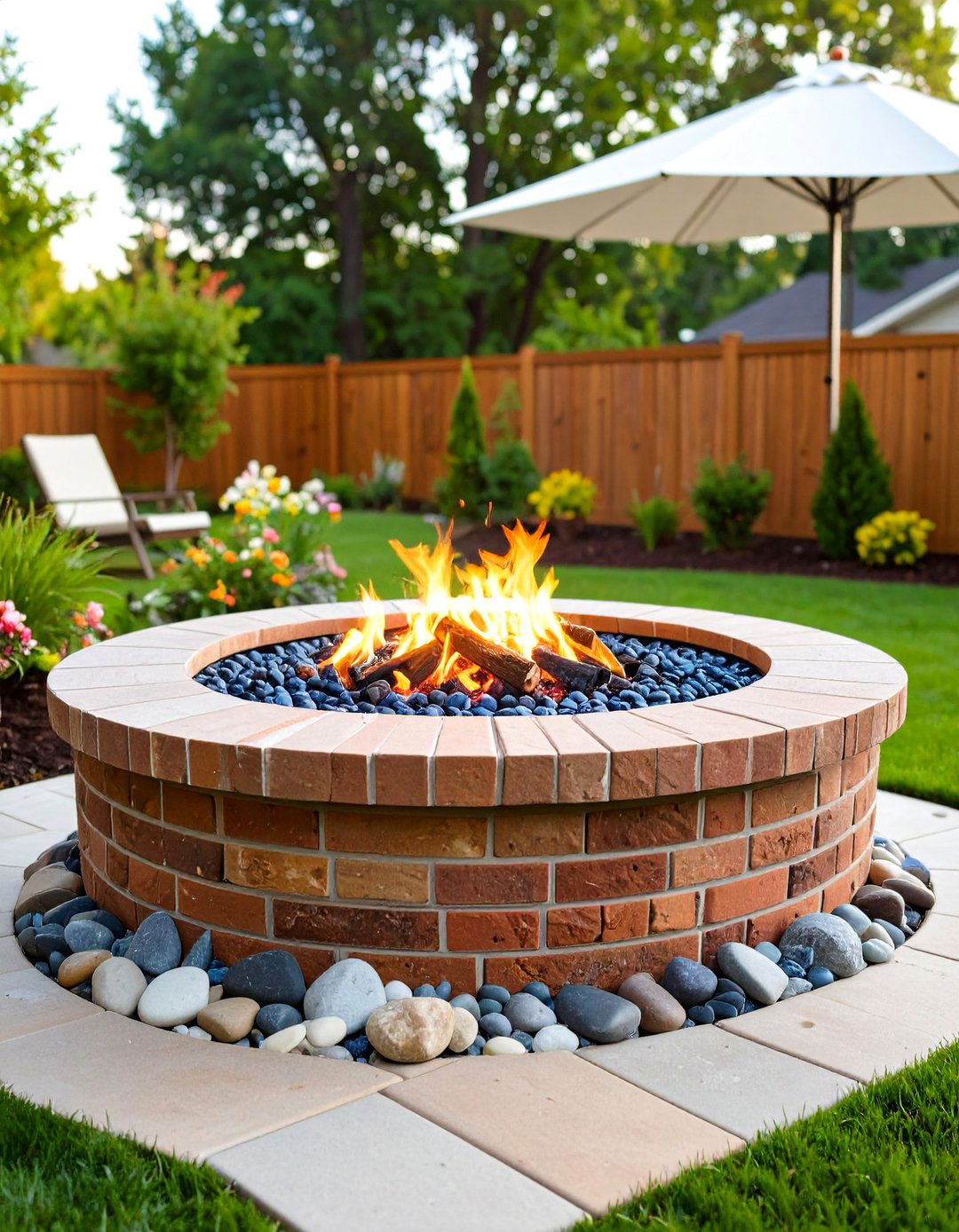
Leave a Reply